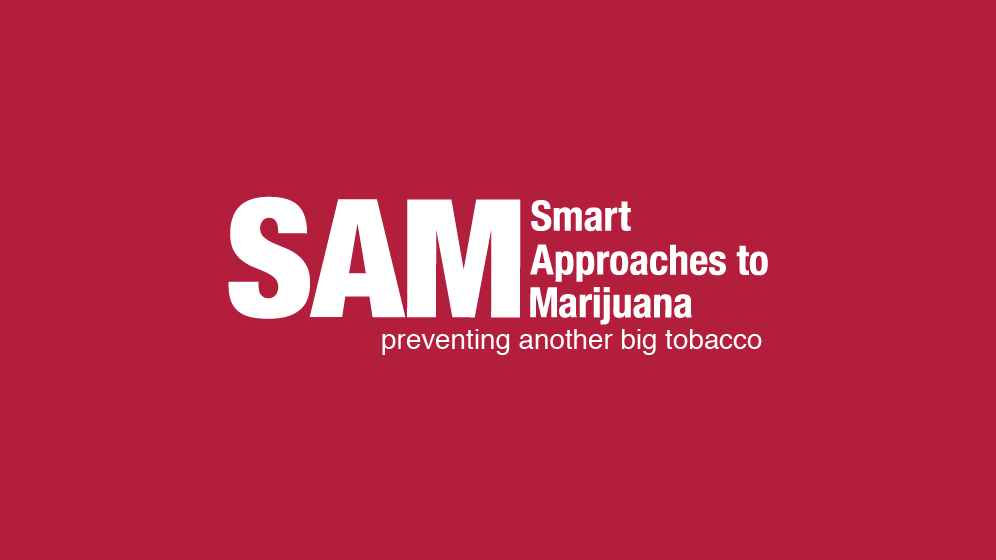
U.S. YOUTH DRUG SURVEY: MARIJUANA USE REMAINS STRONG DESPITE DROP IN OTHER DRUG USE; SURVEY DESIGN MISSES KIDS NOT IN SCHOOL
FOR IMMEDIATE RELEASE
December 16, 2015
12:01 a.m.
Contact: Jeffrey Zinsmeister
[WASHINGTON, DC] – The nation’s annual school survey of drug use, Monitoring the Future (MTF), shows marijuana use among adolescents, including heavy marijuana use, remaining stubbornly high and significantly higher than in 2008 — despite reductions across the board among the other three substances kids use most.
“Why is marijuana use not dropping like the use of other substances? The answer is likely the dramatic rise in marijuana commercialization and industrialization,” said Dr. Kevin A. Sabet, a former White House drug policy advisor who serves now as President of Smart Approaches to Marijuana (SAM). “It may also be why daily marijuana use is at near-record levels. And this doesn’t even include teens not going to school.”
Moreover, this year’s survey may underestimate minors’ marijuana use. Of most concern is its exclusive focus on use of “marijuana/hashish.” The term is not well-defined given the explosion of novel marijuana products. The survey showed that kids in “medical marijuana” states use far more edible products than kids not in those states.

That narrow focus may also exclude highly concentrated products such as butane hash oil (BTO), waxes, and resins (“shatter”), which have also gained in popularity. It therefore remains unclear whether survey respondents identified use of all of the above products as “marijuana/hashish” use.
The survey also excludes high school dropouts, who are more likely to use marijuana than their peers.
“This year’s survey shows how, in an era of falling overall drug, cigarette, and alcohol use — an achievement made possible by years of effort and millions of dollars of public funding — marijuana use among kids remains strong,” remarked Dr. Sabet.
“We should look no further than the powerful marijuana industry that is promoting marijuana use and selling products like marijuana sodas and gummi bears,” Sabet added. “It has counteracted the hard work and advances made by drug prevention advocates, all in favor of financial gain.”
“Furthermore, the survey shows that more kids use edibles in ‘medical marijuana states’ and that a third of high school seniors in those states get their marijuana from a friend’s marijuana recommendation. The survey also excludes dropouts, who use at a higher rate.”
According to statements from the American Medical Association, American Academy of Child and Adolescent Psychiatry, American Society of Addiction Medicine, and the American Psychiatric Association, marijuana use, especially among youth, should be avoided, and legalization efforts opposed.
“Medical research is very clear that marijuana is both addictive and harmful,” noted Dr. Stu Gitlow, immediate past president of the American Society of Addiction Medicine. “One in six adolescents that use marijuana develop an addiction, and use is associated with lower IQ, lower grades, and higher dropout rates in that same population. It is therefore of significant concern that this year’s study may actually underreport marijuana use and downplay its impact.”
Meanwhile, the toll of legalized marijuana continues to climb in Colorado and Washington. For example,a 2015 report indicated that the percentage of DUIs linked to marijuana use in Washington state has almost doubled since legalization, from 18.6% in 2012 to 33% in early 2015. Similarly, marijuana poisonings in Colorado rose 147% from legalization in 2012 to 2014, and was up 52% in Washington during that same timeframe.
“Additionally, a powerful marijuana industry lobby has emerged that sued Colorado to stop restrictions on advertising to protect children, and is now pushing back against municipal regulations in Oregon to keep pot stores away from schools and day care facilities,” commented Jeffrey Zinsmeister, SAM’s Executive Vice President. “Like other addictive industries, marijuana needs to create and maintain heavy users to maximize revenues. It is taking a page from Big Tobacco’s playbook, and expect to see more of the same as big companies put their bottom line before public health.”
For more information about marijuana use and its effects, see https://learnaboutsam.org.